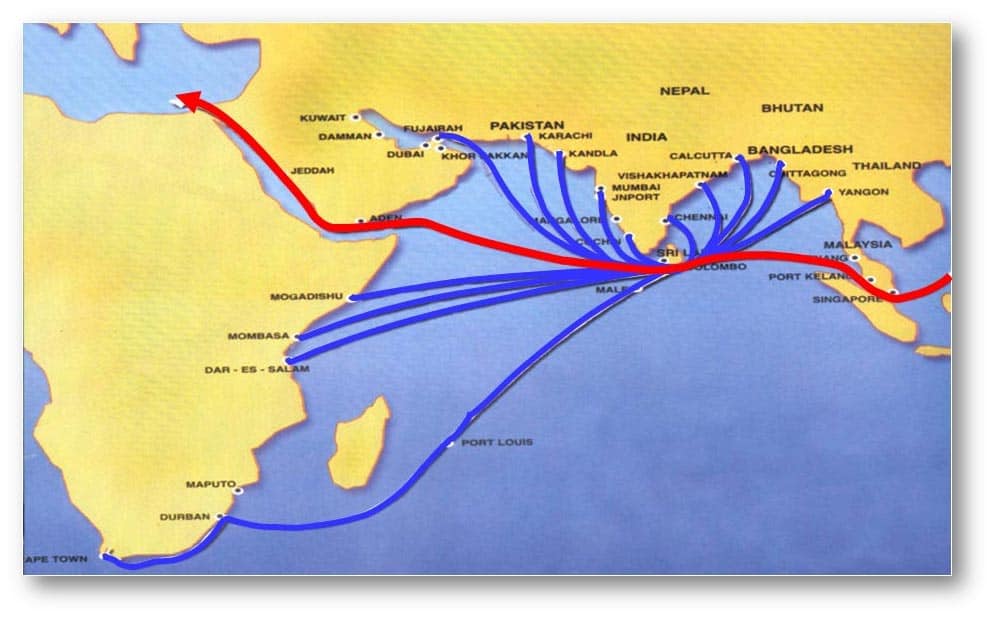The island of Sri Lanka is currently home to seven ports with the Port of Colombo, Port of Hambantota, the Trincomalee Harbour and Oluvil Harbour being those utilised in majority. Since the end of the three-decade civil war in 2009, investments and aid have flowed in from throughout the globe to boost rehabilitation and development. The major ports have seen much improvement, with the Port of Hambantota (the MRMR Port) and the Oluvil Harbour being the most recent developments. There are many plans for Sri Lanka to become a key transhipment hub in Asia.
The Sri Lankan Ports Authority (SLPA) has shared its strategic plan to transform the Colombo harbour into a key transhipment hub in Asia and its steps on how they plan to do so. One such means is to improve the East Container Terminal (ECT) to facilitate and expand the deep-water operations at the Colombo Port. Currently, the Port of Colombo is home to several terminals, which are operated by various parties as follows;

- East Container Terminal (ETC)
- Jaya Container Terminal (JCT) – Owned and Operated by the SLPA
- Queen Elizabeth Quay (QEQ) – Owned by SAGT (South Asian Gateway Terminal Ltd)/Operated by John Keells Holdings
- South Container Terminal (SCT) – Owned and Operated by CICT (Colombo International Container Terminals Ltd)
The terminals are located as follows. Currently, the SLPA has constructed a quay wall that runs 600m as well as an 440m facility for berthing as a stepping stone to further develop the East Container Terminal (ECT). Due to lack of funding, the ECT has been put forward to financiers to design, build, finance, operate, and maintain a strategic container terminal in Colombo. The hope of the SLPA is that within the best suited candidate, the ECT will be able to provide competitive deep water berthing facilities (18-20m), and not to mention offer increased capacity at the Port of Colombo to 2.4mn TEU (twenty foot equivalent units). By propositioning investments in the ETC to the global market for investments, the investors are able to partake and increase in a share of the global transhipment market. Furthermore, Sri Lanka also hopes to improve the berth of the ECT (by 760m) and other terminals at the Port of Colombo to make it an attractive and key transhipment hub in Asia for global shipping lines whilst on international trade sea routes.
Currently, the JCT and SAGT offer a lesser draft thus are only able to offer services to feeder vessel, and larger vessels (ULVs) are directed to the CICT. Though the SLPA has shown in interest in owning/operating the ECT, it is still undecided by the Government of Sri Lanka, to offer it to private operators or to hand it over to SLPA, especially with China’s investments in the Colombo Port City.
Images: Echelon, SLPA/ADB

